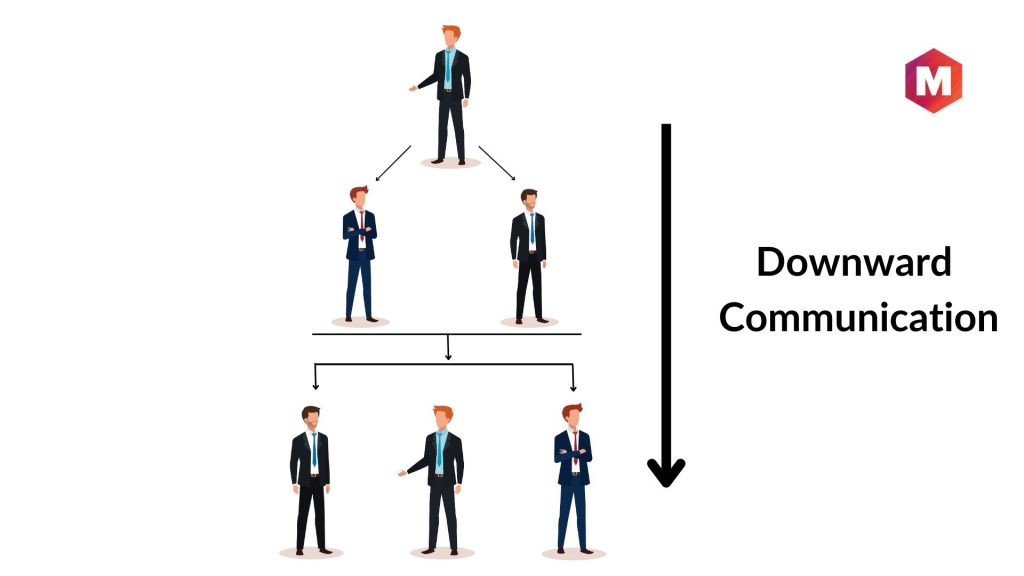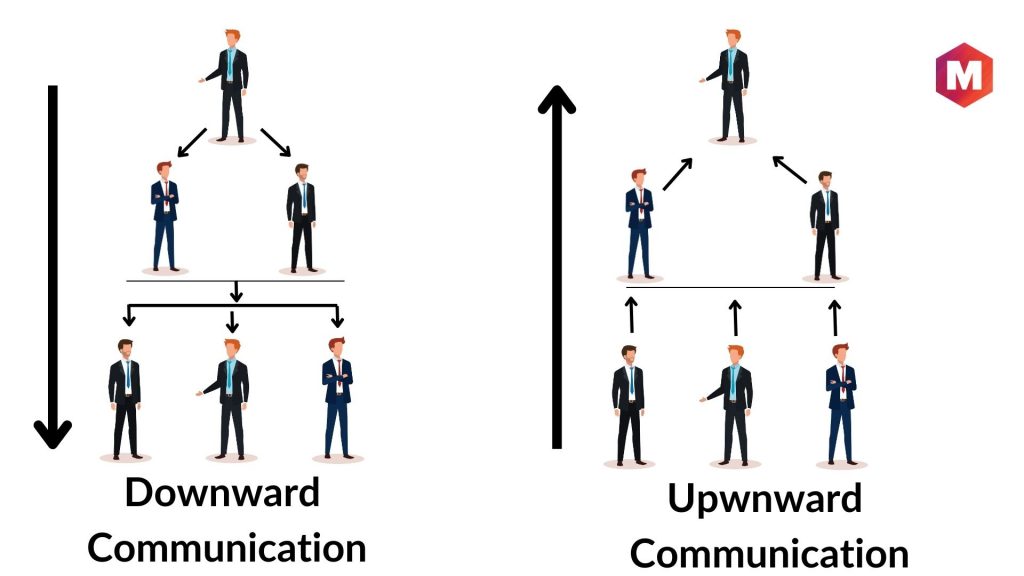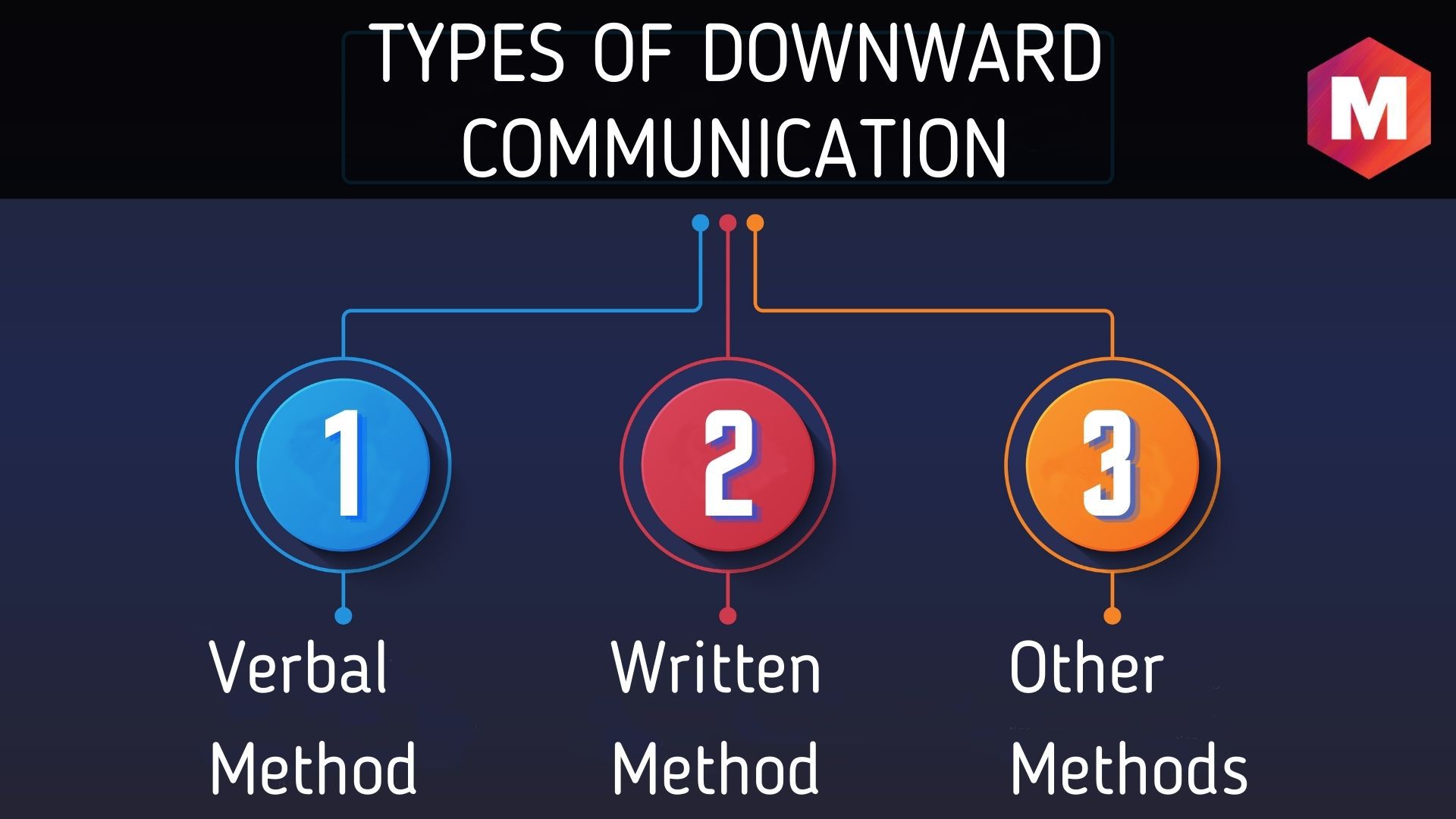
What You Need to Know About Downward Communication: Types, Advantages, and Importance

Downward communication is the flow of information from the top level of an organization to the lower levels It involves sharing goals, instructions, progress reports, and feedback to improve socialization The types of downward communication include oral, written, and other methods Effective downward communication provides motivation, direction, and evaluation of work It also has its advantages and disadvantages
Downward communication is the formal process by which information and commands are disseminated from higher levels of an organization's hierarchy to its lower levels. This type of communication is typically initiated by top-level management, such as CEOs, directors, and managers, who convey important organizational goals, policies, procedures, and decisions to their subordinates. Through this hierarchical structure, messages and instructions are effectively transmitted down the chain of command to ensure a consistent flow of communication throughout the organization.
A manager in an organization often delegates business communication by providing instructions to their assistant manager or supervisor, who in turn directs the workers.
What is Downward Communication?
Downward communication is a crucial aspect of organizational communication, wherein top-level management disseminates information to employees through a formal chain of command. The process involves the transmission of messages or instructions from the highest authority to the next level in the hierarchy, until it reaches the individuals reporting to the higher-ups.
Effective downward communication is a vital component of organizational success, as it facilitates the dissemination of an organization's goals and objectives from superiors to subordinates in a clear and concise manner. This communication flow is predominantly relied upon by management for most organizational communications.
How Does Downward Communication Work?
Sharing information with a lower-level employee is known as downward communication. This type of communication is aimed at providing essential information that can aid the employee in performing their job with greater efficiency and effectiveness.
As a manager in a company, you may need to communicate important updates or instructions to your employees regarding their job responsibilities.
Consider the message you intend to convey and determine the most effective means of delivery, whether that be in-person discussions, via email, or utilizing an alternative medium.
Make sure to have a well-defined communication objective in mind when connecting with your audience. If you are sending an email, ensure that it includes all significant details for them to comprehend the situation and determine the next steps to take.
Downward Communication vs Upward Communication
Upward communication refers to a process where information flows from lower-level employees to top-level management within a hierarchical structure. This means that the communication channel begins with an employee and ends with the highest level of management in a company.
Written communication in a team typically begins with the leader and flows downward to the followers and employees. This process is the opposite of upward communication, which involves the flow of information and messages from employees to managers and leaders.
Purpose of using Downward Communication
Five general purposes because of which an organization should choose downward communication are
1. Finding the right ways to implement goals, strategies, and objectives
Using internal communication channels within an organization, top-level management can effectively relay their mission, vision, messages, and objectives to lower-level employees, ultimately aiding in overall communication and understanding within the organization.
2. Sharing job instructions and rationale
It assists in the process of sharing directives concerning how to perform a job or coordinating individual as well as departmental objectives.
3. Communicating procedures and practices
Businesses and organizations implement various policies, regulations, rules, and guidelines, as well as structural arrangements, which are then communicated downwards from the top to lower levels. This approach helps to maintain consistency in organizational practices.
4. Sharing progress reports and performance feedback
Managers and organizations utilize this mode of communication to disseminate updates on departmental progress, as well as provide individual performance feedback and appraisals. Through this channel, managers can deliver constructive feedback to employees about their performance in relation to their personal goals and company standards.
5. Improving socialization
Types of Downward Communication
To boost employee motivation, organizations implement various strategies and communicate them downwards to their staff. This includes sharing the company's mission and cultural values with employees and encouraging them to participate in special ceremonies and events to foster a sense of belonging and unity of direction.While transmitting pieces of information, principally used communications are oral and written communication. The segment of media depends on its nature and urgency.
1. Oral or Verbal Method
Downward Communication primarily takes place through oral means. The superiors convey their instructions to their subordinates via phone or face-to-face interactions. In addition, managers can also share pertinent information with their subordinates through conferences, meetings, and lectures.
2. Written Method
Written communication is a crucial aspect of organizational communication. Every organization, irrespective of its size or nature, uses various written forms such as circulars, manuals, letters, bulletins, and posters to convey important messages and information to its employees. Letters are typically used to communicate necessary organizational directives, while manuals, circulars, and bulletins are used to communicate procedures and policies. These written documents play a vital role in ensuring that employees are well-informed and aligned with the organization's goals and objectives.
3. Other Methods
Downward communication methods incorporate a variety of mediums, including oral and written formats, as well as audio, visual, and audio-visual media. Commonly used mediums for conveying information to subordinates include television, radio, posters, graphs, and signals. In today's digital age, additional methods such as emails, PowerPoint presentations, messages (SMS), and WhatsApp can also be utilized.
Importance of Downward Communication
In an organization, employing Downward Communication channels are crucial and effective.
1. Providing an Idea
Effective communication from a leader can facilitate the transfer of important information to their team members, including rules, policies, objectives, decisions, and other pertinent details. With a strong leader at the helm, subordinates can gain a thorough understanding of the organization's workings and goals.
2. Motivating with Objectives
Implementing effective downward communication strategies can be a powerful tool for organizations seeking to motivate and engage their lower-level employees. By fostering a culture of open and transparent communication, organizations can inspire their workers to strive for excellence and work together to achieve shared goals and objectives.
3. Maintaining a Discipline
Downward communication follows an organizational hierarchy. Every department follows the set rules or procedures. In this way, discipline is maintained in an organization.
4. Explaining about Change
Downward communication becomes crucial whenever there are changes in works, plans, procedures, policies, rules, timings, etc. This type of communication is highly anticipated by employees as it provides clear explanations regarding the changes.
5. Giving Direction and Assigning a Job
Subordinates can effectively receive assignments, work-related tasks, and directives from their superiors through the use of downward communication. This method of communication allows for clear and concise instructions to be given, enabling superiors to assign jobs to their employees with ease.
6. Evaluating Works
Downward communication helps superiors to evaluate works performed by their employees. Through Downward communication, employees are informed of their evaluations.
Examples and Mediums of Downward communication
Here are a few examples of the downward communication
A manager sending an email to inform employees, outlining the company’s new strategy and how it will affect workers’ jobs.
Content rewritten:
The employee receives news from their boss that they will be assigned to a new project for the upcoming months.
A manager telling employees about the company’s new benefit plan and how it will affect their healthcare costs.
Tips on How to Make Downward Communications Successful
Ensure that the information you share is relevant and valuable to them.
2) Be clear and concise — Avoid using jargon or technical terms that may confuse your team members. Use simple language that is easy to understand and communicate your message clearly.
3) Encourage feedback — Create an environment where your team members feel comfortable giving feedback and asking questions. This will help you understand their needs and concerns, and improve the effectiveness of your communication.
4) Use multiple channels — Use different communication channels such as email, messaging apps, and video conferencing to reach your team members. This will ensure that everyone receives the information they need, regardless of their location or work schedule.
5) Follow up — Make sure you follow up with your team members to ensure that they have understood the information and that they have everything they need to complete their tasks. This will also show that you value their input and are committed to their success.
Ensure that your team comprehends the purpose behind any new or altered task. Clearly and succinctly explain any necessary changes to ensure comprehension and buy-in. Additionally, it is crucial to treat others with respect, avoiding interruptions or talking over team members during discussions.
Advantages of Effective Downward Communication
Revised Content:
Effective communication from higher authorities ensures coherence and efficiency in an organization. When information and instructions come from those in power, it enables smooth coordination of activities, leading to optimal productivity levels among employees.
2. Easy and effective delegation
The delegation becomes so easier and effective coming from the superiors to the employees representing a chain of commands.
3. Organizational Control and Discipline
As downward communication follows the organization’s hierarchy, control, discipline, and members’ compliance become much easier to preserve.
4. Builds Good Relationships
Downward communication builds good relationships between the hierarchy. A strong feeling of participation happens in this communication for the subordinates.
Disadvantages of Downward Communication
1. Distortion
As information proceeds through different levels of the organization from the vertical communication structure, chances of distorted information and messages can be there.
2. Loss of Information
The possibility of losing information is quite there in this type of communication.
3. Time Consuming
It takes time for information to be transferred from one stratum of employees to another, so feedback can be slow, resulting in time loss.
4. Lowers Morale
Downward communication, in some ways, can have a negative impact when supervisors misuse their position and power, so it can result in lowering the morale of employees.
Conclusion
Downward communication plays a crucial role in providing information, assigning tasks, explaining policies and plans, and guiding subordinates within an organization. Moreover, it facilitates the distribution of interdepartmental duties and responsibilities, communicates changes in the environment, shares performance evaluations, delegates authority, and maintains discipline.
How important do you consider downward communication for sharing ideas and completing tasks in an organization?
NEXT
Two Way Communication
PREV
Upward Communication
START
Types of Communication


















